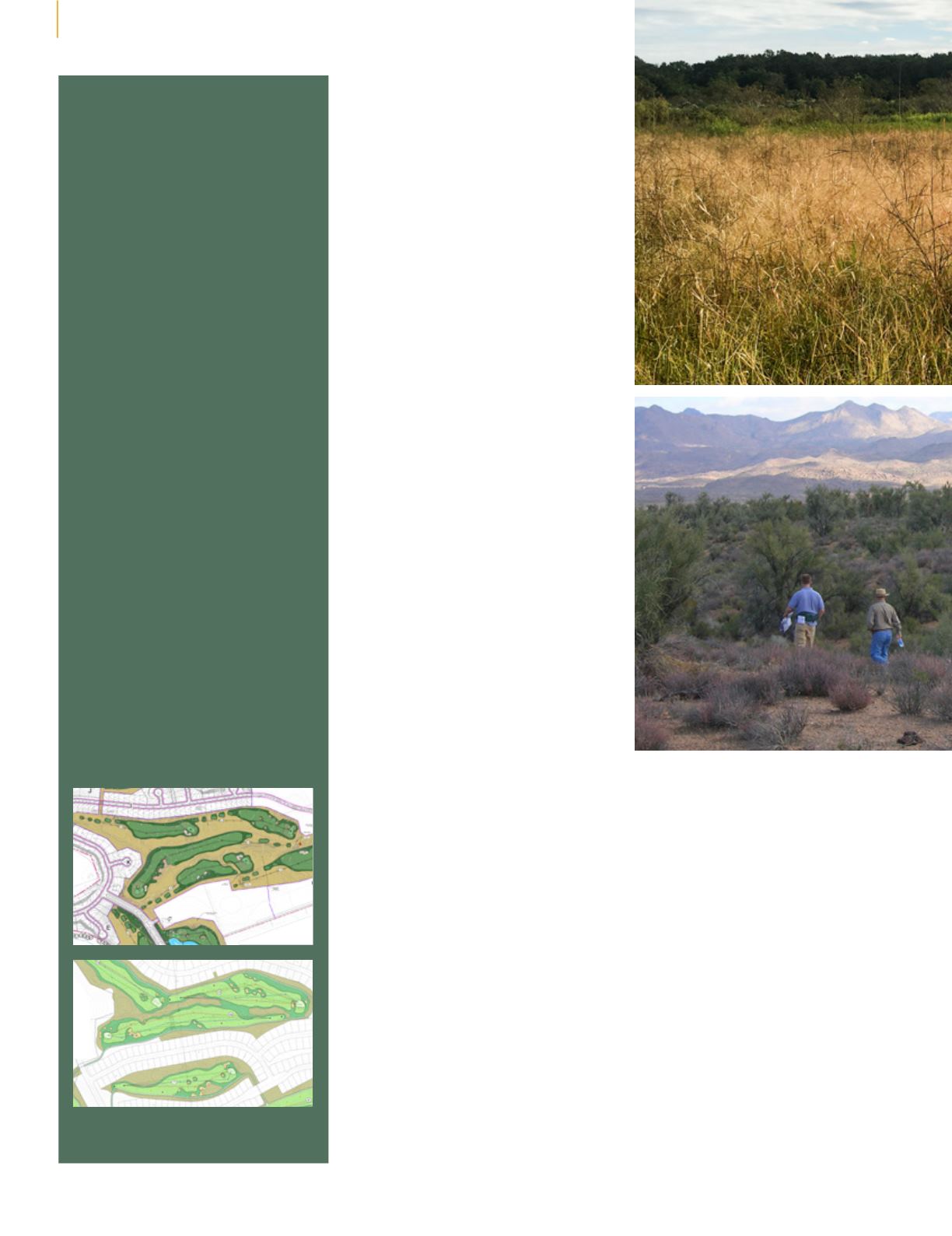

14
|
By Design
holes located in the middle of the
golf course that are located first,
or other times I will locate the
clubhouse first, followed by the
starting and returning holes for each
nine. Sometimes an unusual shape
or configuration of a property may
require special attention in order
to use the land efficiently, or some
difficult topographical features may
have to be negotiated a certain way in
order to produce a good routing.”
Dealing with complexity
“Small or compact properties require
great efficiency in how the land is
used in order to get the most out of
a small site, while producing a safe
and playable layout,” says Carrick.
“Rocky or rugged terrain requires
a routing that is sensitive to the
natural elevation changes, in order
to minimize extensive earthmoving
or blasting. On sites with dramatic
changes in elevation it is important to
devise a routing that climbs up softer
slopes gradually, while descending
over the steeper terrain. Flat sites,
while easy to work with, present the
most challenge in terms of creating
interest on the golf course, and
introducing variety in the length and
direction of holes helps to provide
a good framework for the course
design. Environmentally sensitive
sites often impact the connectivity
and playability of the golf course,
and it is important to minimize the
distances between the green of one
hole and the tee of the next hole as
much as possible.”
“Literally hundreds of decisions
are being made all at once,” says
Richardson. “A move in one corner
means something gets shifted over in
another area, and then there are the
‘givens’ such as the practice range—
the largest of all puzzle pieces. Add
to this whatever ‘standards’ the golf
architect wants to uphold, criteria
such as par and length, and the way
those factors get distributed.”
The puzzle is further complicated
if the golf course is driven by a
larger development master plan.
“Designing a golf community or golf
resort presents another degree of
complexity to the routing process.
Home sites, roads, accommodations
and other amenities have to be
integrated efficiently and safely with
the golf course,” says Carrick.
“Developers want to keep the golf
course on as small a footprint as
possible to maximize development
opportunities,” explains Schaupeter.
“I try to strike a balance between
golf course acreage and golf course
frontage by routing holes adjacent to
each other wherever possible. This
will reduce some of the development
frontage but it will also reduce some
of the acreage requirements for the
golf course. Golf holes routed adjacent
to each other will take up a little less
ground than holes routed individually
through adjacent developments. This
also improves the golf experience
as golfers aren’t playing through a
ROUTING
CASE STUDY: TPC COLORADO
Changing priorities
Routings will often evolve over
time. Art Schaupeter, ASGCA,
began work on what would
become the TPC Colorado layout
in 2005. But in 2015, when it
was decided that the layout would
become a TPC course, some of
the development parameters were
modified to allow the golf course
routing to take more of a priority.
Schaupeter highlights two big
changes to the routing that have
dramatically improved the layout
and will create a better golfing
experience: “Firstly, the original
holes 7 and 8 had housing on all
sides. They were re-routed, along
with holes 14-16, to create a block
of five golf holes, a ‘core’ golf
experience. The result is fewer road
crossings, less distance between
holes and housing restricted to the
perimeter of the block of holes.
“Also, the original holes 1 and 2
were switched with a development
parcel, moving the golf holes over
to the edge of a large lake. This
created a better setting for those
holes, and allowed the overall golf
layout to be re-numbered to gives
the course a four-hole finish adjacent
to the clubhouse,” he explains.
The TPC Colorado routing was modified
to give a more ‘core’ golf experience
Photo: Forrest Richardson & Assoc.


















